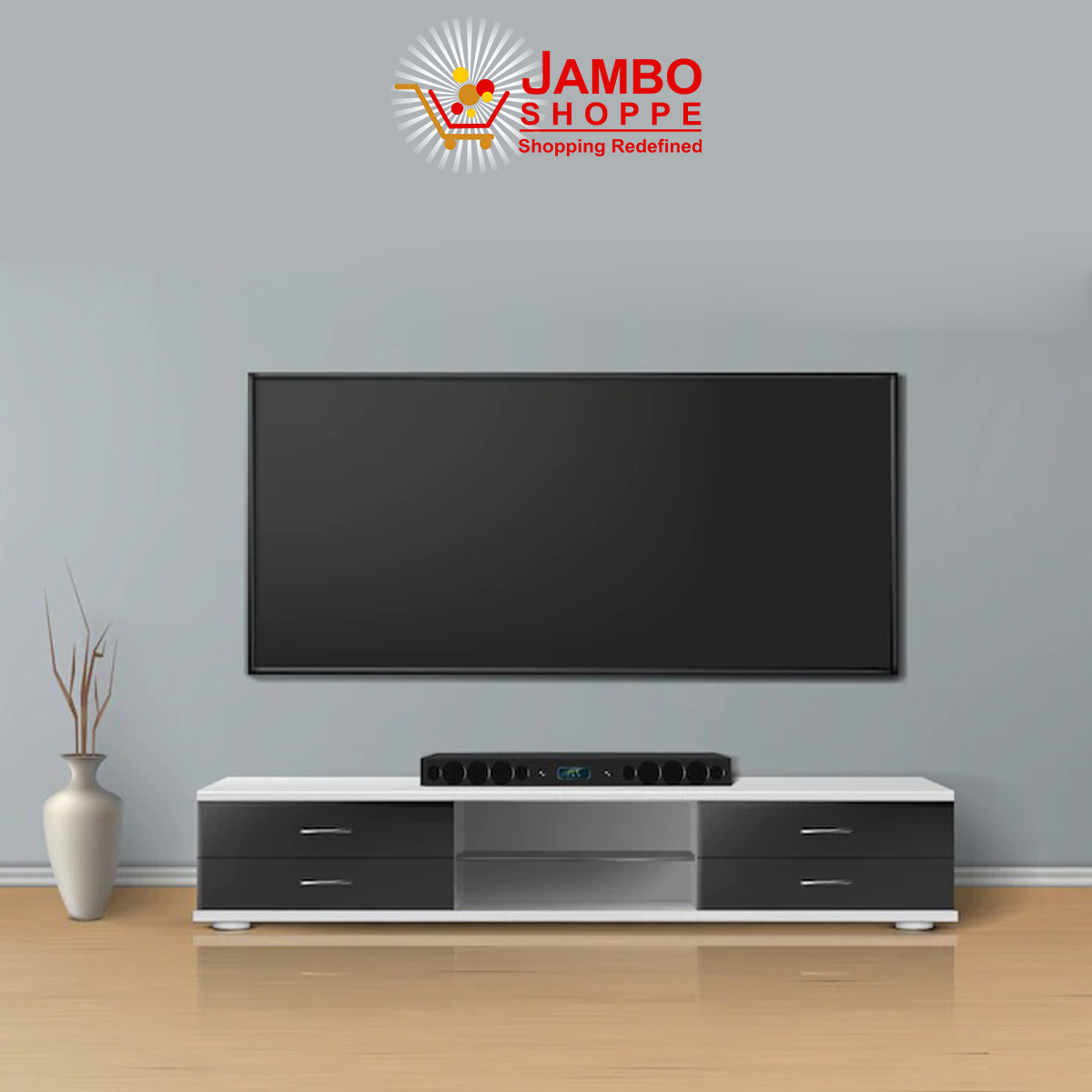There are several steps between deciding to buy a new TV and finally turning it on to watch your favorite movies, TV shows, sports, and news. Some of them may seem obvious, such as determining what screen size you require, what features you desire, and which brand of television you should purchase. However, there are some minor details to consider, such as where you want to place your new television.
We’ve already covered a few of these more important topics, such as what you should know when buying a new smart TV online and why you should research your TV before purchasing it. Now, in this guide, we’ll discuss an often-overlooked but critical step — how to position your television.
When it comes to positioning your TV, wall-mounting and stand-mounting are the two main options we have now. We’ll go through the benefits and drawbacks of both methods of mounting your TV in this tutorial, so you can determine which is best for you.
What is a TV wall mount?
Wall mounting, as the name implies, is the process of attaching your television to a wall. You can place the TV on a wall across from your seating in your living room or bedroom, allowing you to watch from a comfortable position.
Wall mounting is more difficult than stand mounting and necessitates some effort on the part of the user to secure the mount to the wall and the TV to the mount. If you are not comfortable using tools or drilling holes to attach screws, you may need to hire a professional to install the wall mount and TV for you.
Most Television sets today have the ability to be wall-mounted, with a basic low-profile mount usually included in the box. Furthermore, many TV manufacturers will include free wall-mounted installation with your purchase, so all you have to do is be patient and wait for the professionals to come over and do it for you.
Alternatively, you could buy an aftermarket wall-mount separately online from Jamboshop and install it yourself — more on that in the following section.
Types of TV wall mount
There are numerous types of wall mounts on the market today. Here are a few possibilities:
- Flat Mount
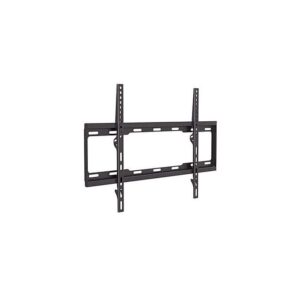
This is the most basic sort of wall mount, and it is frequently included as part of the sales package with most TVs. It has a little depth and helps you to keep the TV close to the wall you’re putting it on. Because they mainly rely on clips to link the TV to the primary mount, these mounts don’t give any flexibility or change in viewing angle or position, and they don’t allow the TV to be relocated easily. This style of mount, on the other hand, is inexpensive, simple to install, and usually the most secure option to wall mount a TV. Click here to buy the Flat Mount bracelet at an affordable price only on Jamboshop.
- Hook mount
This style of wall mount attaches to the wall mount via hooks on the TV. It’s comparable to a flat mount, but it allows you to effortlessly remove the TV from the mount when you need to. This allows you simpler access to the TV’s ports at the back and can also aid in cleaning. Most flat mounts now use a hook-like way of attaching to the main bracket, therefore hook mounts aren’t as common as they once were. Click here to buy the Tilt/swivel Mount bracelet at an affordable price only on Jamboshop.
- Tilt/ swivel mount
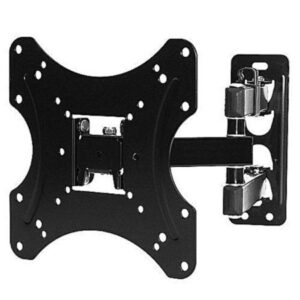
This style of mount is similar to a flat mount, but it allows you to tilt or swivel (just as the name suggests) the TV to get the best position. It allows you to change the viewing angle, which is useful if you have numerous viewing positions in the same room, such as sofas or even on the floor. Because of the design, its best suited to smaller TVs, while larger TVs may be too heavy for this type of mount.
- Full-motion mount
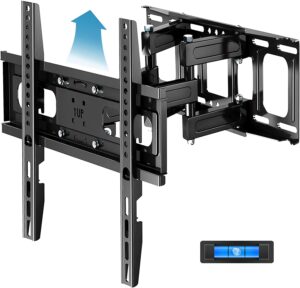
This is the most sophisticated (and expensive) type of TV wall mount. It enables the TV to be angled in a variety of ways depending on the viewer’s position and is best used in large rooms with a variety of seating options. It is also appropriate for use in professional settings such as office conference rooms.
Some mounts may also include an extending arm that allows users to adjust the distance between the TV and the wall. It can also be used to gain access to ports on the back of the TV when necessary. It provides the most flexibility and ease of use and is typically available for all sizes of televisions.
Why you should consider mounting your television on the wall
The most significant benefit of wall mounting your TV is the amount of space it saves. There is no need for a table or any other surface space to place the TV on, which is useful in a small room or house. This can also be aesthetically pleasing because it allows for a more minimalistic look and a little more flexibility in terms of where you can place your TV. You can also specify how high you want your TV to be mounted on the wall.
Wall mounting also eliminates the issue of size; you no longer have to worry about the TV fitting in the available space, as long as your wall is large enough to accommodate the TV. As a result, you can have a larger screen size without worrying about how you’ll view it.
The disadvantages of wall mounts
- There are certain drawbacks to this installation approach. Professional installation is frequently required, which can add to the cost and labor of purchasing a new television. Whether you do it yourself or hire someone to do it for you, you’ll want to be sure the installation is secure and proper because the mount will be supporting your hefty (and expensive) TV.
- Because most wall mounts are low profile and leave very little space between the TV and the wall, it may be difficult to access ports on the back of the TV. This may cause problems connecting equipment to the TV or necessitate the use of special cables. Furthermore, power and HDMI cables may be visible unless specifically concealed in the wall, which would necessitate additional electrical and civil work.
- Additional equipment, such as a set-top box, gaming consoles like the PlayStation or Xbox, or table-top streaming device like an Android box, would need the use of a table, stand, or cabinet near the TV, potentially negating the wall mount’s space-saving and aesthetic benefits.
What is a TV stand mount?
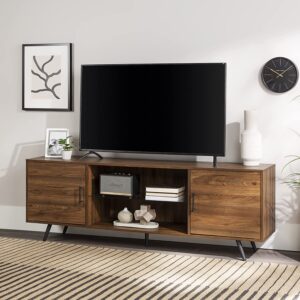
Stand mounting or table mounting is the simplest and quickest technique to set up your TV. It entails placing your TV on a level surface. This is usually a medium-height TV stand or table that raises the TV to a comfortable viewing height for you. Most flat-screen TVs currently come with a base stand that keeps the TV upright and steady, whether it’s LED, OLED, or Plasma. A wide base with a single stem or legs on either end of the bottom can be used.
These are usually the simplest to install and may be done quickly at home with simple tools. If you already have a table or TV stand, you can just place the TV on top of it and get started right away. As a result, the TV remains solid atop the stand, allowing you to simply control the distance from the wall, cabling, and other equipment to use with the TV.
The disadvantages of stand mounts
- Stand-mounting has some drawbacks, the most significant of which being that the TV takes up surface area. To place the TV on, you’ll need a tabletop or other flat surface that’s big enough to accommodate the TV’s base stand. Frequently, the base stand or legs are too wide to fit on the current table. Furthermore, the viewing height is determined by the height of the stand, and if the stand is too short, the TV may be too low for many people’s tastes.
- Another significant disadvantage is the safety of your television, as well as the protection of your children and pets. The television is not fixed to anything and merely rests on a level table. As a result, even a tiny inadvertent push can cause it to topple and tumble, potentially damaging the TV or injuring someone.

